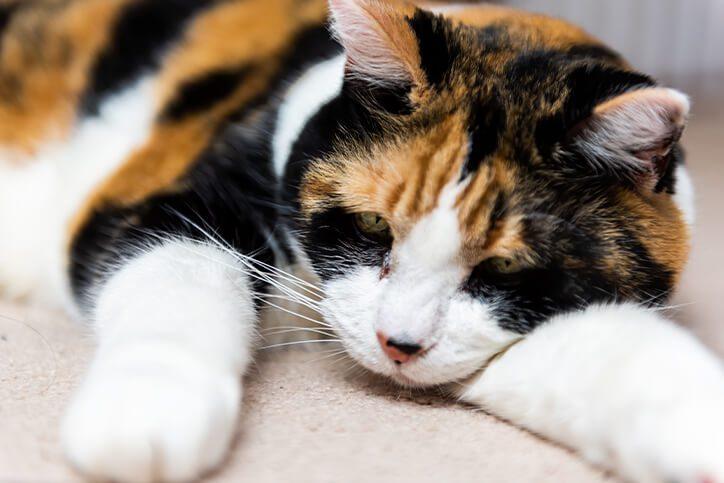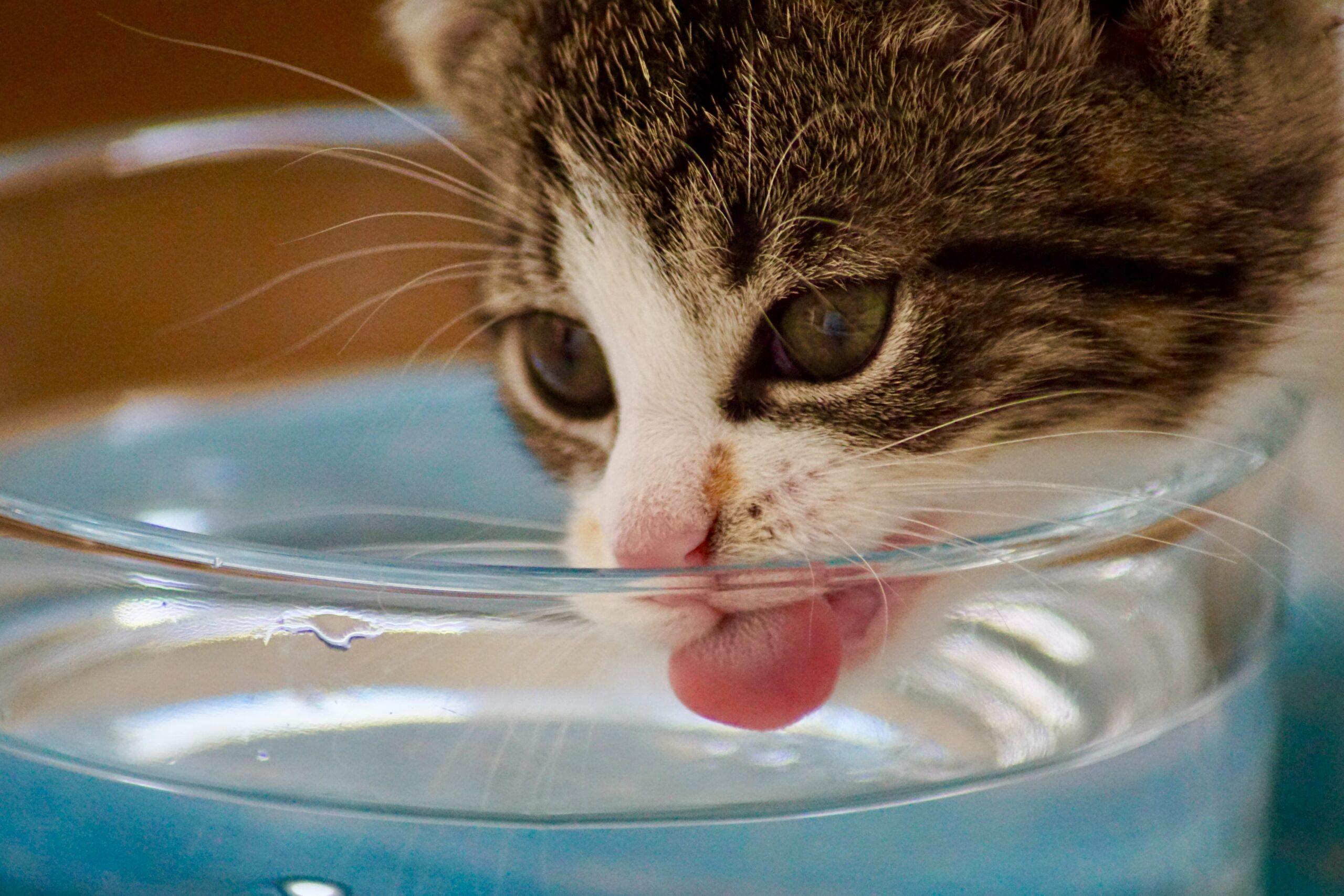Cats are often playful, curious, and full of personality, but just like any other pet, they can face health challenges that require our attention. One of the more subtle yet critical issues that cat owners should be aware of is dehydration. Unlike dogs, who may be more obvious in their need for water, cats can be sneaky about their hydration levels, making it essential for us to be vigilant.
In this article, we’ll explore the key signs that your feline friend might be dehydrated, helping you to spot these red flags before they escalate into more serious health problems. By understanding the behaviors and physical indicators associated with dehydration, you can ensure your beloved companion stays happy and healthy. Let’s dive into the telltale signs that warrant your attention!
Table of Contents
- Understanding the Importance of Hydration for Your Cat
- Recognizing the Early Signs of Dehydration
- Effective Ways to Encourage Your Cat to Drink More Water
- When to Seek Veterinary Help for Dehydration Concerns
- Q&A
- Closing Remarks
Understanding the Importance of Hydration for Your Cat
Keeping your feline friend well-hydrated is essential for their overall health and well-being. Just like humans, cats rely on water for numerous bodily functions, including digestion, circulation, and temperature regulation. Failing to maintain adequate hydration can lead to serious health issues, such as kidney problems or urinary tract infections. Therefore, it’s crucial for cat owners to be aware of the signs that may indicate dehydration in their beloved pets. Regularly monitoring your cat’s water intake and looking for signs of reduced hydration can help prevent potential complications.
Some common signs to watch for include:
Dry Gums: Check your cat’s mouth; dry or tacky gums can be a red flag.
Skin Elasticity: Gently pinch the skin at the back of the neck; if it doesn’t spring back quickly, your cat may be dehydrated.
Decreased Appetite: A sudden drop in your cat’s interest in food can indicate health issues, including dehydration.
Lethargy: If your cat is less active than usual, it may be a sign that they are not getting enough fluids.
To better understand the importance of hydration, refer to the following table illustrating the potential impacts of dehydration on your cat:
| Hydration Level | Possible Effects |
|---|---|
| Well-Hydrated | Optimal organ function, healthy coat, active behavior |
| Mild Dehydration | Decreased energy, dry mouth, reduced appetite |
| Severe Dehydration | Kidney failure risk, urinary issues, possible shock |
By recognizing these signs and understanding the detrimental effects of dehydration, you can take proactive steps to ensure your cat remains hydrated and healthy. Encouraging water intake, providing a fresh supply of clean water daily, and incorporating wet food into their diet can all help support your cat’s hydration needs.
Recognizing the Early Signs of Dehydration
Being attentive to your cat’s daily habits can help you catch the early signs of dehydration before they escalate into a more serious condition. One of the first indicators is a change in their drinking behavior. If you notice your cat is drinking less water than usual or seems disinterested in their water bowl, this could be an initial warning sign. Additionally, you should keep an eye out for their energy levels. A dehydrated cat may become lethargic or less active than their typical playful self. Other physical signs to watch for include:
Dry gums: Healthy cat gums should be moist and pink.
Skin elasticity: Gently pinch the skin at the back of their neck; it should quickly return to its place if they are well-hydrated.
Sunken eyes: Look for signs of sunken or dull eyes, which can indicate dehydration.
It’s essential to act promptly if you observe any of these signs. Waiting can lead to more severe health complications. Another useful method to assess hydration is by monitoring their urine output. If your cat is producing less urine or if the urine is darker than usual, it may be another red flag. Understanding these indicators will empower you to take better care of your feline friend and help them maintain optimal health.
| Sign | What to Look For |
|---|---|
| Dry Gums | Gums should appear moist and pink. |
| Skin Elasticity | Skin should snap back quickly after being pinched. |
| Sunken Eyes | Eyes should be bright and alert. |
| Low Urine Output | Less frequent urination with dark urine color. |
Effective Ways to Encourage Your Cat to Drink More Water
Keeping your feline friend adequately hydrated is essential for their overall health. One effective way to encourage your cat to drink more water is by providing a variety of drinking options. Try different types of bowls, including ceramic or stainless steel, as some cats may prefer one material over another. Additionally, consider experimenting with water fountains, which can attract cats with the sound and movement of flowing water. It’s also helpful to place water bowls in multiple locations around your home, as some cats may be more inclined to drink if the water is easily accessible.
Another engaging method is to enhance the water’s flavor. You can do this by adding a splash of low-sodium chicken or beef broth to the water, making it more appealing to your cat. Some felines enjoy ice cubes or frozen broth treats, which can not only hydrate them but also provide a refreshing treat. Don’t forget to observe your kitty’s behaviors and adjust accordingly. For instance, if they seem more active in the evening, ensure there’s plenty of fresh water available during those hours. Here are some quick tips to remember:
- Use different bowl materials
- Offer a water fountain
- Place bowls in various locations
- Add flavor with broth
- Consider ice cubes for hydration
When to Seek Veterinary Help for Dehydration Concerns
If you notice any of the signs associated with dehydration in your cat, it’s essential to consult your veterinarian promptly. Medical attention is crucial if your cat exhibits severe symptoms, such as excessive lethargy, dry gums, or sunken eyes. Additionally, if your cat has not urinated in more than 24 hours or is showing signs of vomiting or diarrhea, do not hesitate to seek professional help. Early intervention can make a significant difference in your cat’s health and recovery.
It’s equally important to monitor any changes in your cat’s drinking habits. If they suddenly become less interested in their water bowl or refuse to drink altogether, this could be a sign of underlying issues. Here are some warning signs to watch for:
- Persistent vomiting or diarrhea
- Loss of appetite
- Dry or sticky gums
- Skin that doesn’t return to normal quickly when pinched
Consider keeping a simple log of your cat’s eating and drinking habits, as this information can be invaluable to your vet. A well-informed veterinary consultation can assist in determining the best course of action for rehydration or any necessary treatments.
Q&A
Q: What are some common signs that my cat might be dehydrated?
A: There are several signs to look out for when it comes to cat dehydration. Common indicators include a dry nose, reduced skin elasticity (if you gently pull the skin on the back of their neck, it should spring back quickly), lethargy, decreased appetite, and dry or sticky gums. You might also notice your cat drinking less water than usual or favoring wet food more than dry.
Q: How can I check if my cat’s skin elasticity is reduced?
A: To check your cat’s skin elasticity, gently pinch the skin at the back of their neck or between the shoulder blades and lift it slightly. If the skin takes longer than a second to return to its original position, it may be a sign of dehydration.
Q: Is a dry nose a reliable indicator of dehydration in cats?
A: A dry nose is often considered a classic sign of dehydration, but it’s not always a definitive indicator. Cats can have dry noses for various reasons, including changes in temperature or humidity. It’s best to consider it alongside other symptoms like lethargy and decreased appetite.
Q: How much water should my cat be drinking daily?
A: On average, a cat should drink about 2 to 4 ounces of water per 5 pounds of body weight daily. Cats on wet food may drink less because they get some fluids from their food. Keep an eye on your cat’s water intake and consult your vet if you notice significant changes.
Q: What can I do to help my cat stay hydrated?
A: To encourage hydration, ensure your cat has access to fresh, clean water at all times. Consider using a cat water fountain, as many cats prefer running water. You can also add wet food to their diet or try flavoring their water with a little bit of low-sodium chicken broth. Regular vet check-ups can also help ensure they’re maintaining proper hydration.
Q: When should I be worried about my cat’s hydration levels?
A: If you observe any signs of severe dehydration—such as extreme lethargy, persistent vomiting, or diarrhea—it’s essential to seek veterinary care immediately. Additionally, if your cat continues to refuse water for more than 24 hours or displays any concerning symptoms, don’t hesitate to contact your veterinarian.
Q: Can certain conditions make my cat more prone to dehydration?
A: Yes! Conditions like diabetes, kidney disease, or hyperthyroidism can increase a cat’s risk of dehydration. Cats that are primarily on a dry food diet or those that are very active, particularly in hot weather, are also at a higher risk. If your cat has any underlying health issues, regular monitoring of their hydration is crucial.
Q: Are there other ways to monitor my cat’s overall health related to hydration?
A: Absolutely! Alongside watching for signs of dehydration, you should keep an eye on their overall behavior, grooming habits, and litter box usage. Healthy cats usually groom themselves frequently and have a regular appetite. Any significant changes in these areas could indicate an issue worth discussing with your vet.
Closing Remarks
keeping your feline friend hydrated is vital for their overall health and well-being. By being aware of the signs of dehydration—such as dry gums, lethargy, and decreased appetite—you can take proactive steps to ensure your cat stays happy and healthy. Always keep fresh water available, consider adding wet food to their diet, and consult your veterinarian if you notice any concerning symptoms. Remember, your attention to their hydration can make a world of difference in their life. By staying vigilant and informed, you’ll not only be a responsible pet owner but also a loving companion to your cherished kitty. Here’s to many more purrs and playful moments together!

















